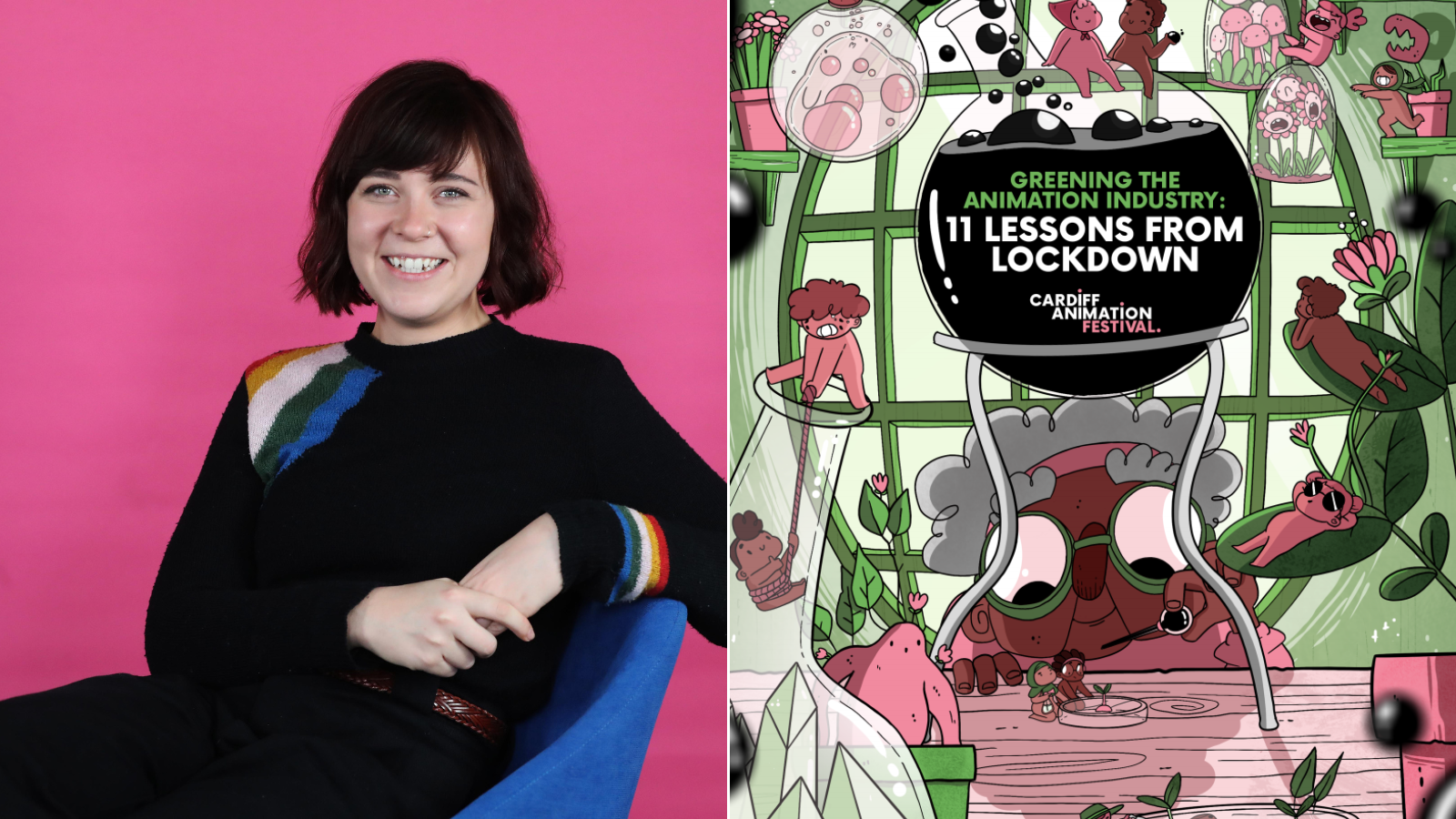Lauren Orme is a busy, creative woman. As well as being the co-founder and creative director of Picl animation company, she leads the team behind the bimonthly Cardiff Animation Nights screenings (founded in 2014) and the biennial Cardiff Animation Festival (founded in 2018).
It’s through the latter that Lauren applied for Clwstwr seed funding to find out about how green the animation industry is and whether industry festivals can be carried out in a climate-conscious way. The 2020 Cardiff Animation Festival, which was set for the month after the UK went into national lockdown, couldn’t go ahead as planned, so Lauren tied her Clwstwr R&D project into her efforts to move the festival online.
‘The climate crisis is very close to my heart; we've got a big responsibility to do what we can to tackle it,’ says Lauren. ‘I've always been concerned about how much energy is used and how much waste is generated by festivals. You fly people over to talk, delegates travel to watch, you produce lots of physical stuff that becomes redundant post-festival… it doesn’t feel very green, at times.’
‘I realised that we could use the time people had booked to attend the festival to uncover potential solutions. We could bring people together to think and talk about environmentalism, the opportunities we have to reduce the industry's impact on the environment and how to use our role as storytellers to encourage people to be greener.’
One of the first things Lauren did was to organise an online climate event: Cardiff Animation Festival Climate Assembly. Delegates enjoyed talks followed by discussion sessions.
‘Emma Peddie from BAFTA Albert gave a brilliant talk full of statistics about the climate impacts of the TV and film industry, but there isn't much data at the current time about animation specifically. Emma said: ‘you can't manage what you can't measure.’ That was enough to get me thinking about how we could measure the industry’s impact, so that we could then manage it. I suspected it’d be lower than TV and film, but needed to back this up.’
After the Climate Assembly, the Cardiff Animation Festival team gained confidence in their ability to run an online event and dedicated themselves to finding a way to reinvent the festival online.
‘Developing online events made us realise how low impact and accessible they can be compared to offline events. I think festivals like ours might look quite different in the future, potentially forever. A blend of online and offline access would allow more people to be a part of a festival without causing increased environmental impact.’ To round off her Clwstwr project, Lauren did her own small study into the environmental impact of the animation industry prior to the pandemic, during it and afterwards. She tasked three animation companies in Cardiff – Cloth Cat Animation, Bomper Studio, and her own company, Picl Animation – with polling their employees on a set of questions and measuring energy use.
‘We asked questions about how employees travel to work, how many people work on each project, if and how they travel for meetings and conferences, their average energy usage in their headquarters, the team’s energy use when working from home… it was quite wide-ranging to give a full picture and the results varied. For example, Cloth Cat has work in China that has required them to travel there regularly, but Picl and Bomper Studio don’t go anywhere that far for work.’
Lauren found that, for these three studios, animation had a much lower impact than the average for TV and film production. Also, her figures suggest that the impact during the pandemic and afterwards would be even lower than pre-pandemic because the animation industry embraced working from home – something that wasn’t so feasible for TV and film.
‘I published the findings from the audit in a report called '11 Lessons From Lockdown' - a condensed version as well as a more detailed PDF version. I realise that we would need to do a bigger audit involving more companies to get a truly representative picture, but I hope that animation companies can use our report as a resource to improve their environmental impact and to get them thinking about greener ways of producing content.’
The project has strengthened Lauren’s passion for climate-consciousness in the animation industry.
‘I’d like to do more work and research to continue our Clwstwr work. I want to consider what the world is looking like now, and what a path forward might be - which will probably be different to how it was before I applied for my seed funding. Perhaps one day, we could set up a consultancy that helps other animation companies adopt greener habits. For now, I’ll keep up my interest and work as low impact as possible.’

